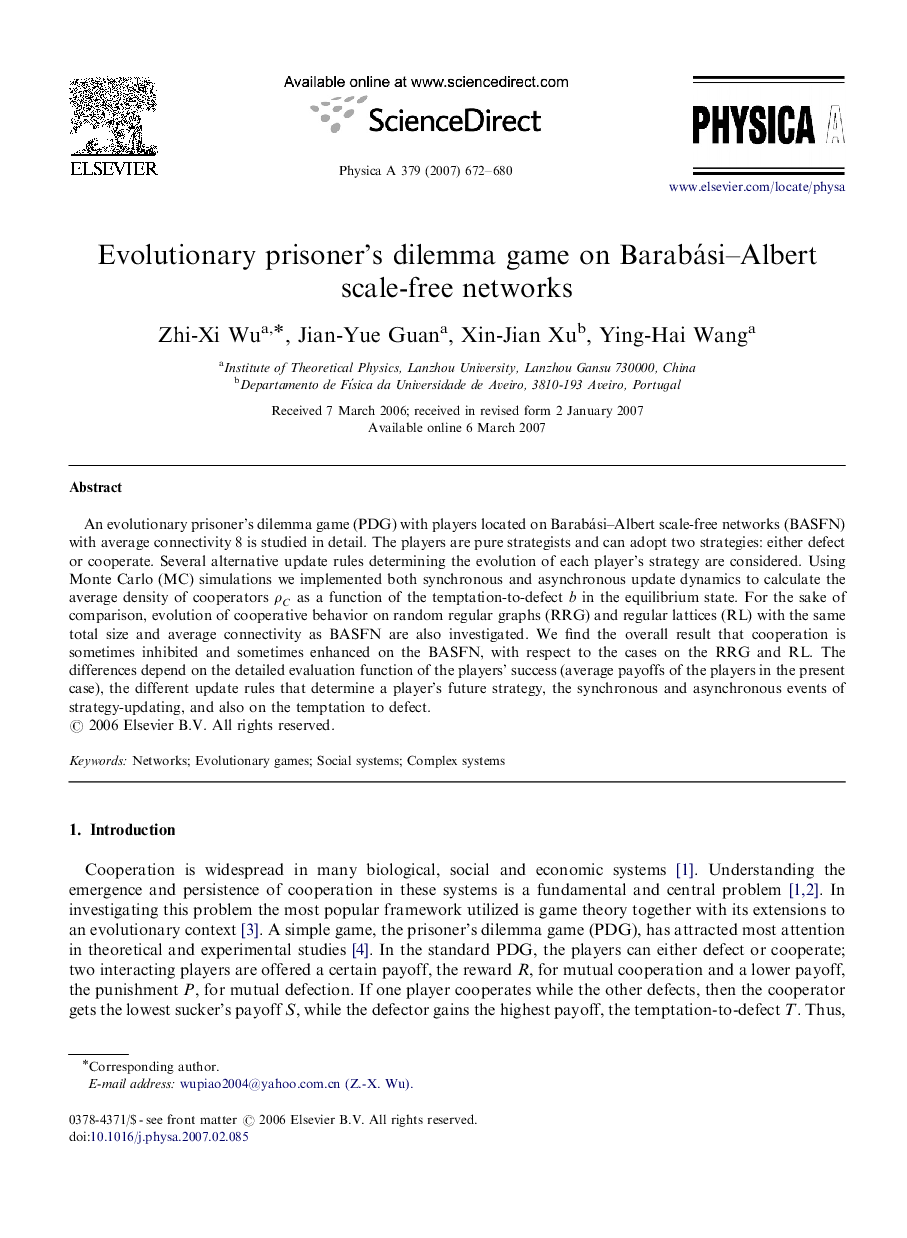| Article ID | Journal | Published Year | Pages | File Type |
|---|---|---|---|---|
| 978230 | Physica A: Statistical Mechanics and its Applications | 2007 | 9 Pages |
An evolutionary prisoner's dilemma game (PDG) with players located on Barabási–Albert scale-free networks (BASFN) with average connectivity 88 is studied in detail. The players are pure strategists and can adopt two strategies: either defect or cooperate. Several alternative update rules determining the evolution of each player's strategy are considered. Using Monte Carlo (MC) simulations we implemented both synchronous and asynchronous update dynamics to calculate the average density of cooperators ρCρC as a function of the temptation-to-defect bb in the equilibrium state. For the sake of comparison, evolution of cooperative behavior on random regular graphs (RRG) and regular lattices (RL) with the same total size and average connectivity as BASFN are also investigated. We find the overall result that cooperation is sometimes inhibited and sometimes enhanced on the BASFN, with respect to the cases on the RRG and RL. The differences depend on the detailed evaluation function of the players’ success (average payoffs of the players in the present case), the different update rules that determine a player's future strategy, the synchronous and asynchronous events of strategy-updating, and also on the temptation to defect.
